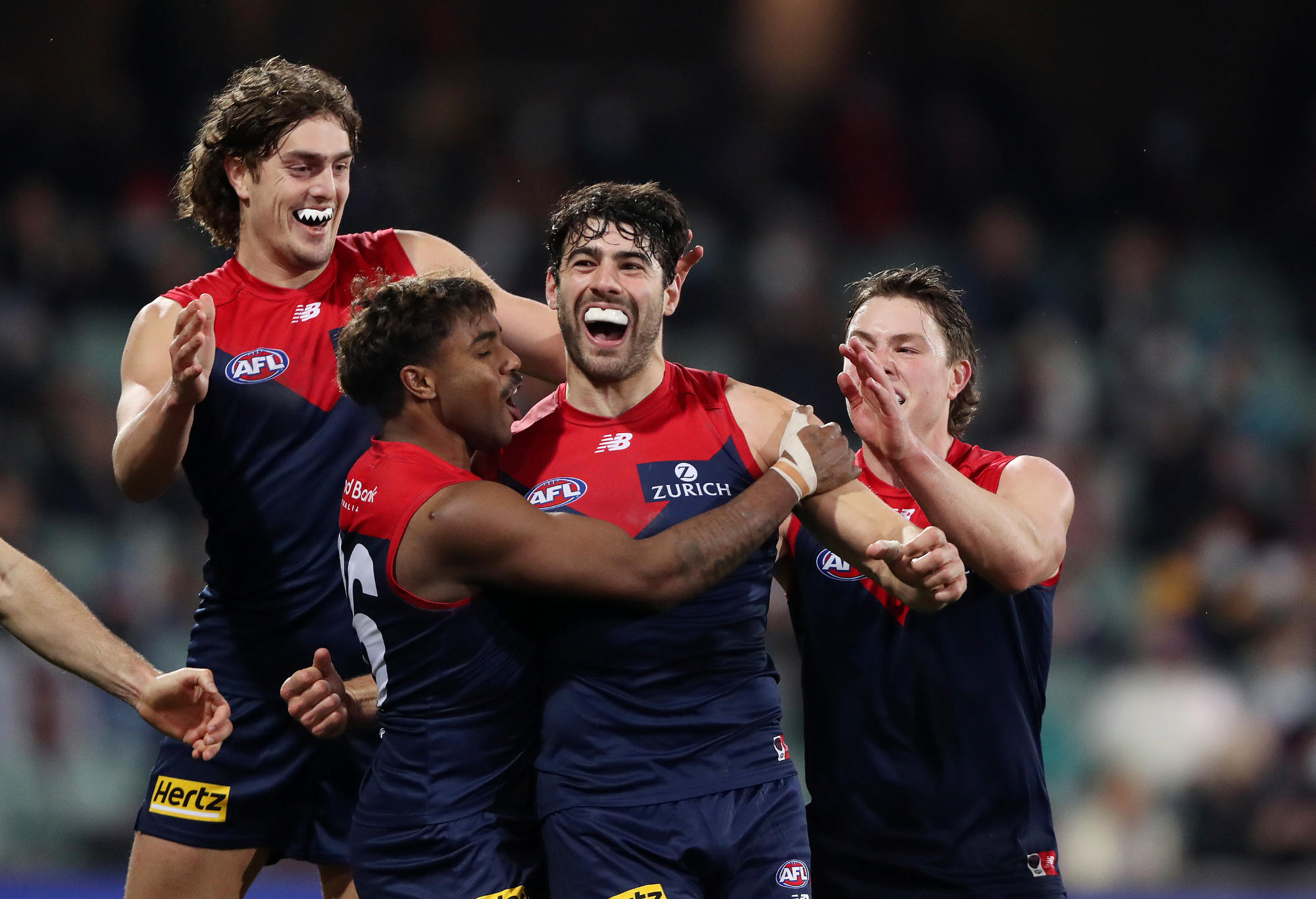WATCH: Is this the harshest 50m penalty of 2024?
Jack Petruccelle gave up a 50m penalty and a goal to young Sun Will Graham, after spoiling the ball away after it had gone…
In the 21st century, AFL clubs have demonstrated an affection towards succession planning. These plans are viewed as a demonstration of excellent sporting governance, stability and unity when long term positions shift from a trusted lieutenant to a younger and less-experienced professional.
The Sydney Swans were the pioneers of effective AFL succession planning. In 2009, they announced that then head coach Paul Roos would step down at the end of the 2010 season and be replaced by Roos’ long-term coaching assistant, John Longmire. Four grand finals and one premiership into Longmire’s 13-year tenure, the Swan’s succession plan has proved fruitful.
Having watched from afar the stability that the Swans enjoy; the Melbourne Demons decided that they too should implement a coaching succession plan. In 2014, the Demons appointed Simon Goodwin as an assistant coach, to allow him to learn off Paul Roos, who was the Demons’ head coach from 2014-2016. At the end of the 2016 season, Roos handed over the Demon’s head coaching position to Goodwin. A Demon premiership under Goodwin in 2020, their first in 57 years, further solidified the benefits of transition planning for AFL clubs.

(Photo by Sarah Reed/AFL Photos via Getty Images)
However, some of the AFL’s strongest clubs have also shown that coaching handovers can be fraught with complications. This was exemplified by the fractured transitions that occurred at Collingwood between Mick Malthouse and Nathan Buckley in 2011 and at Hawthorn between Alistair Clarkson and Sam Mitchell in 2021.
The idea of a succession plan makes perfect sense. It allows a successful candidate to be expertly moulded into a senior coaching or management role. The incoming individual can gain all the experience of a senior position without the pressure and scrutiny that typically comes with it. Planning gives all stakeholders involved (players, sponsors and staff) certainty and surety around the direction that an organisation is taking.
So, why has a succession plan not been initiated for the CEO position of the AFL? The current CEO, Gillon McLachlan was the beneficiary of such an arrangement. In April 2014, then AFL CEO Andrew Demetriou announced that his Chief Operating Officer McLachlan would become the new AFL boss. In June 2014, McLachlan took on the job.
In April 2022, McLachlan announced that that season would be his last. However, here we sit in February 2023 with McLachlan still positioned as AFL CEO. Is there a lack of legitimate candidates for the position? This seems unlikely, as it is one of the most sought-after sports administrative gigs in the country.
Is there unfinished business that McLachlan must complete prior to stepping down? This also seems unlikely, as his big-ticket CEO items appear to have been completed. These items included the new media rights deal in 2022 and the effective navigation of the COVID-19 pandemic throughout the 2020-2022 seasons.
So, when does McLachlan now intend to stand down? Per an AFL media release in November 2022, McLachlan is set to step aside between April 13-16 of 2023. The reason stated for this extension was to ensure the completion of the Hawthorn racism investigation and the finalisation of the new Tasmania team licence.
An interesting two months await, until McLachlan’s supposed conclusion as head of the AFL. Will he be wrapping up in April 2023? And if so, who will be replacing him?